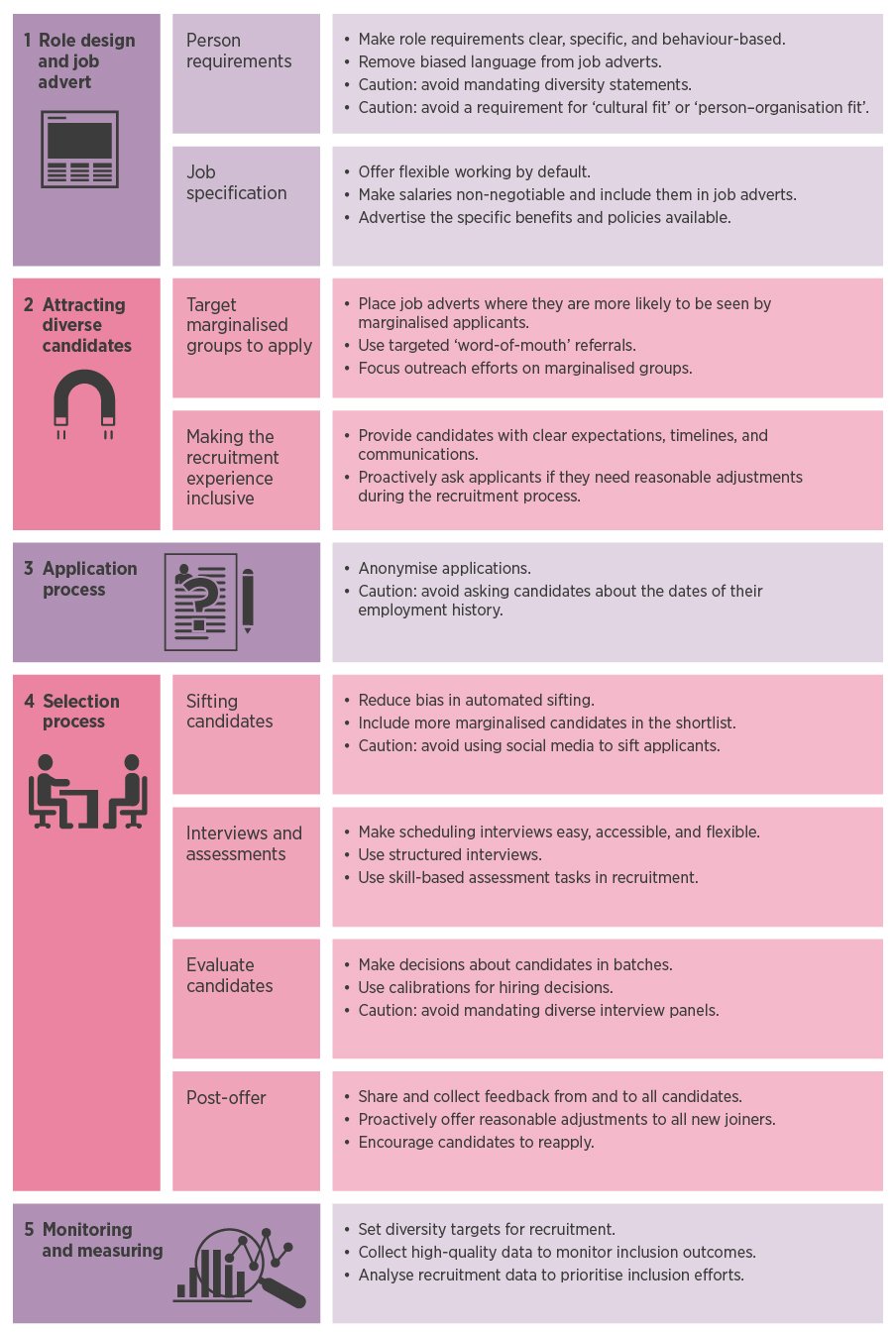CIPD is launching new and timely guidance to help employers recruit inclusively
Claire McCartney discusses our recently published practical guidance on inclusive recruitment
Claire McCartney discusses our recently published practical guidance on inclusive recruitment
Last month saw the launch of important practical guidance on inclusive recruitment, written for the CIPD, by the Behavioural Insights Team. There are two practical guides to support employers in this area – one for HR/ employers and one for people managers, with responsibility for recruiting.
This is important because we know from our Resourcing and talent planning report with Omni RMS, that less than a third of employers (28%) train all interviewers on legal obligations and objective interview practice and less than a fifth make efforts to remove bias through testing the words of job adverts (18%) or checking that tests used are valid, reliable and objective (17%). Subsequently, many organisations are missing out on a diverse pool of prospective candidates and employees.
Recruitment is about getting the most suitable candidate into a role. It is critical for employers to deliver their goals, as well as for employees to find jobs that suit them. However, it is not always clear what makes a candidate ‘suitable’, and there is potential for bias to creep in when making these decisions.
Recruitment can be a very subjective process, demanding hiring managers make complex and high-stakes decisions, often in limited time. This all adds up to make it particularly susceptible to unconscious biases and there is strong evidence that marginalised groups face discrimination in recruitment contexts.
The Inclusive recruitment guides emphasise the need to redesign recruitment processes to reduce the influence of bias. Clear, objective, structured, and transparent processes are fairer for candidates, supporting more equal outcomes, and enabling employers to attract more diverse talent pools and to select the most suitable candidates for the role.
The guidance cover recommendations for five key areas of recruitment and contain practical evidence-based actions, aligned with international standards for inclusion and diversity, which employers and hiring managers can implement to make the recruitment process more inclusive. We also include some case studies showing inclusive recruitment in practice, and provide some caution around common actions that may hinder inclusivity.
Key steps to consider when making recruitment more inclusive include:

Browse our A–Z catalogue of information, guidance and resources covering all aspects of people practice.
Discover our practice guidance and recommendations to tackle bullying and harassment in the workplace.

Claire specialises in the areas of equality, diversity and inclusion, flexible working, resourcing and talent management. She has also conducted research into meaning and trust at work, age diversity, workplace carers and enterprise and has worked on a number of international projects. She is the author of several reports and articles and regularly presents at seminars and conferences.

Read our latest Labour Market Outlook report for analysis on employers’ recruitment, redundancy and pay intentions

Explore the CIPD’s point of view on religion and belief, including actions for Government and recommendations for employers

Explore the CIPD’s point of view on race inclusion in the workplace, including recommendations for employers

We look at the main focus areas and share practical examples from organisations who are optimising their HR operating model

Our series on current practices, future models and successful transformations

We look at what’s driving change in HR structures, what emerging models look like and what to consider when evolving your current model

How can L&D teams can engage with new technologies like generative AI to impact performance?